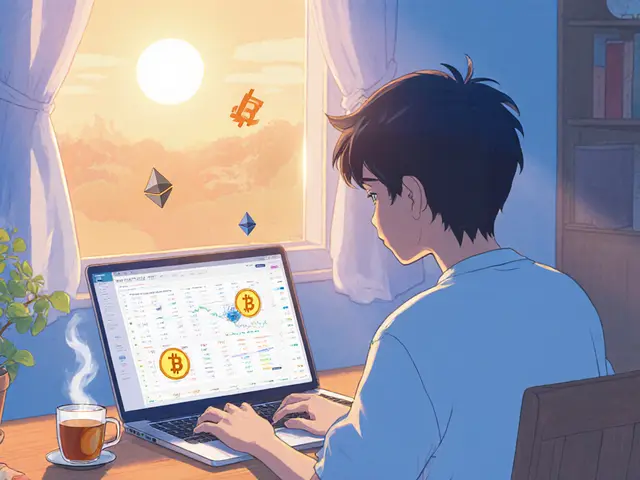TRON oracle: What It Is, How It Works, and Why It Matters in Crypto
When you use a TRON oracle, a bridge that feeds real-world data like prices, weather, or sports results into TRON’s blockchain. Also known as a blockchain oracle, it’s what lets smart contracts on TRON react to events outside the network—like paying out a bet after a football match ends or adjusting a loan rate when ETH hits $3,000. Without it, TRON’s apps would be stuck in a bubble, blind to anything happening on the internet or in the real world.
TRON oracle isn’t just a technical detail—it’s the reason DeFi apps on TRON can offer things like crypto-backed loans, prediction markets, and automated insurance. If a DeFi platform on TRON needs to know the current price of BTC to liquidate a position, it doesn’t guess. It asks the oracle. And the oracle pulls that data from trusted sources like CoinGecko or Chainlink, then delivers it securely to the blockchain. This process keeps things fair, transparent, and automated. But here’s the catch: if the oracle gets hacked or feeds bad data, everything built on top of it can fail. That’s why the best oracles on TRON use multiple data sources, verify results, and are audited like code.
Related systems like blockchain oracle, a general term for any service that connects off-chain data to on-chain smart contracts are used everywhere—from Ethereum to Solana—but TRON’s version is optimized for its own network speed and low fees. That means oracles on TRON can update prices faster and cheaper than on other chains, which is why projects like TRON-based betting dApps and yield aggregators prefer it. You’ll also see smart contracts, self-executing programs on TRON that run when conditions are met relying on these oracles to trigger actions—like releasing funds when a flight is delayed or adjusting interest rates based on market volatility.
What’s missing from most discussions is how real users benefit. If you’re trading TRX, staking in a DeFi pool, or playing a game on TRON, you’re already using an oracle—without even knowing it. The price you see, the rewards you earn, the outcomes you win or lose—they all depend on this invisible layer of data. And as TRON grows, so does the need for reliable, tamper-proof oracles. That’s why the best projects on TRON don’t just build apps—they audit and verify their oracle feeds.
Below, you’ll find real examples of how TRON oracle systems are used, abused, and improved across different crypto projects. Some posts show how oracles enabled massive gains. Others reveal how bad data led to total losses. There’s no fluff—just what happened, why it mattered, and what you should watch for next.
14
What is WINkLink (WIN) crypto coin? A clear guide to its purpose, price, and role in TRON
WINkLink (WIN) is a TRON-based oracle token that connects real-world data to blockchain apps. Used in gaming and DeFi, it enables fair outcomes and automated payments. Learn how it works, its price, and why it matters.
Latest Posts
Popular Posts
-
 Xena Exchange Crypto Exchange Review: Professional Tools vs. Regulatory Risks
Xena Exchange Crypto Exchange Review: Professional Tools vs. Regulatory Risks
-
 What is WINkLink (WIN) crypto coin? A clear guide to its purpose, price, and role in TRON
What is WINkLink (WIN) crypto coin? A clear guide to its purpose, price, and role in TRON
-
 Non-Resident Indians and Crypto Taxes: No Exemptions, Just Rules
Non-Resident Indians and Crypto Taxes: No Exemptions, Just Rules
-
 What is Bitgert (BRISE) crypto coin? Full breakdown of the blockchain, tokenomics, and real-world performance
What is Bitgert (BRISE) crypto coin? Full breakdown of the blockchain, tokenomics, and real-world performance
-
 What Are Public and Private Keys in Cryptocurrency? A Simple Guide to Digital Ownership
What Are Public and Private Keys in Cryptocurrency? A Simple Guide to Digital Ownership
Tags
- crypto exchange
- cryptocurrency
- blockchain
- crypto exchange review
- meme cryptocurrency
- cryptocurrency compliance
- Binance Smart Chain
- crypto airdrop 2025
- CoinMarketCap airdrop
- underground crypto Nepal
- crypto airdrop guide
- crypto staking
- Bitcoin mining Iran
- airdrop
- Ethereum staking
- GENIUS Act
- liquid staking
- cryptocurrency exchange security
- crypto
- crypto airdrop



